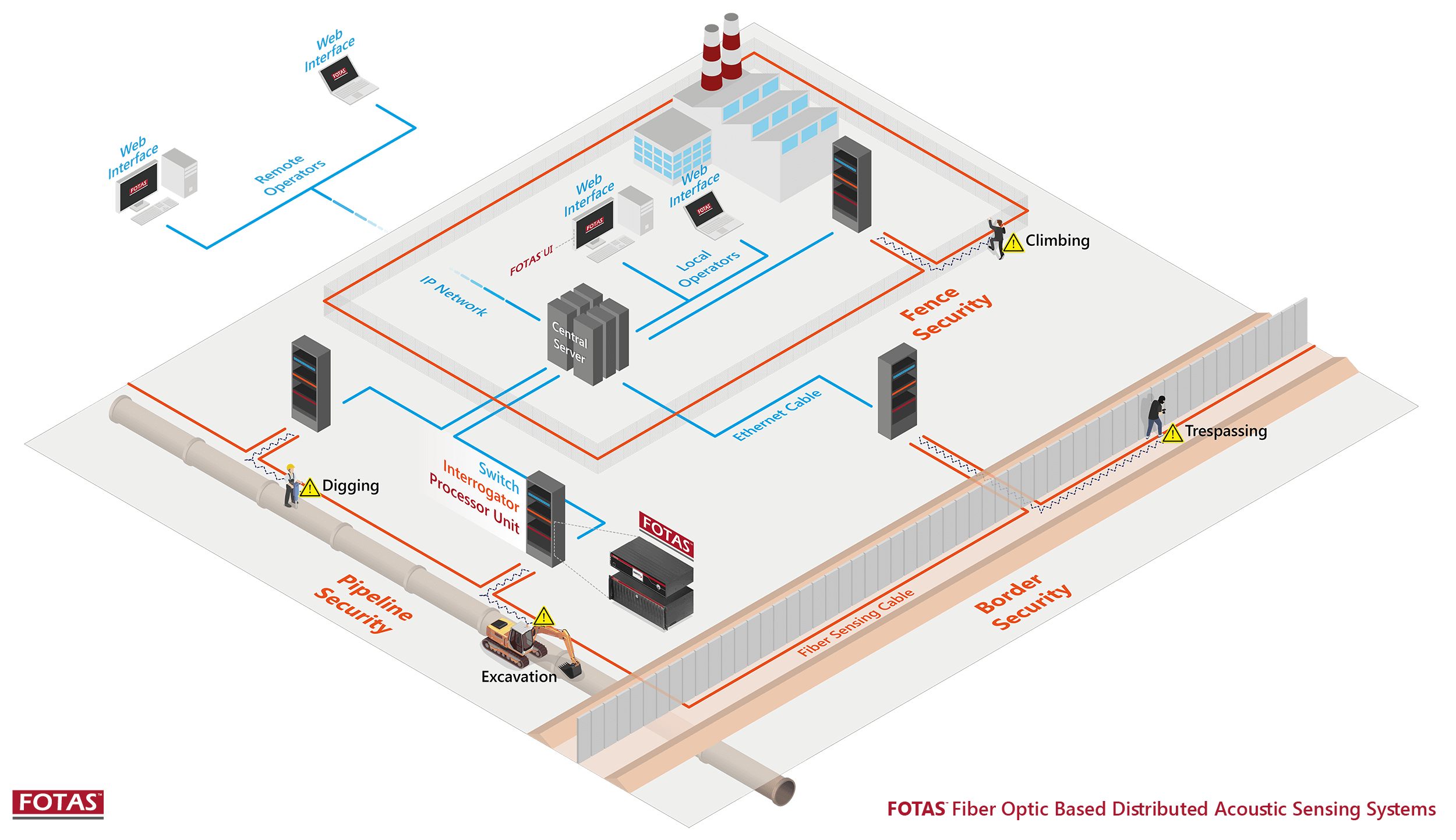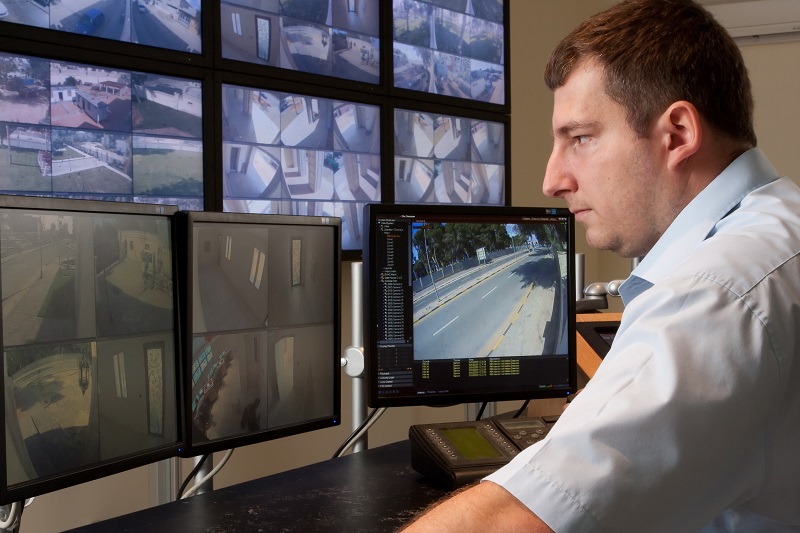How Fiber Security Helps Prevent Intrusions and Boosts Surveillance
The Ultimate Guide to Fiber Optic Safety Solutions for Your Organization
In an age where safety concerns are paramount for companies, comprehending the intricacies of fiber optic innovation can be transformative. This overview lays out how incorporating fiber optic safety systems not just improves data protection yet additionally uses benefits like resistance to disturbance and real-time monitoring capabilities. As companies review their protection needs, it comes to be important to think about the setup process and the current technologies in the area. What particular elements should be focused on when choosing the best system, and how can organizations ensure they make one of the most educated choices?
Comprehending Fiber Optic Modern Technology

The core of a fiber optic wire consists of a slim glass or plastic center, surrounded by a cladding layer that shows light back into the core. fiber optic security system. This layout guarantees marginal loss of signal toughness, also over substantial ranges. There are two key kinds of fiber optic cords: single-mode and multi-mode. Single-mode fibers are designed for long-distance transmission, while multi-mode fibers appropriate for shorter distances, commonly utilized within structures.
Optical fiber are not only quicker yet also more secure than conventional circuitry. Their inherent resistance to electromagnetic interference and the trouble of tapping into the signal without discovery make them a favored option for services focusing on information integrity and protection. As organizations progressively rely upon secure and effective communication systems, comprehending fiber optic innovation ends up being crucial for notified decision-making.
Trick Benefits of Fiber Optic Security
When considering protection alternatives for a business, the advantages of fiber optic systems are particularly engaging. Fiber optic modern technology supplies exceptional information transmission speeds and bandwidth capacity, making it perfect for handling high-resolution video clip feeds from monitoring electronic cameras. This capacity makes sure that safety employees receive real-time data, enhancing general reaction times to potential security risks.
Moreover, fiber optic cable televisions are naturally resistant to electro-magnetic disturbance, which can endanger the integrity of standard copper-based systems. This resistance guarantees that the information transmitted remains safe and continuous, offering an extra trustworthy protection framework. Additionally, optical fiber are much less vulnerable to physical damages, as they are made from glass instead of metal, minimizing upkeep costs and downtime.
An additional significant advantage is the increased scalability of fiber optic systems. As service demands develop, fiber networks can see this be conveniently expanded to fit added protection devices without substantial overhauls to the existing infrastructure. Lastly, fiber optic systems use enhanced cybersecurity functions, consisting of encryption capacities that protect sensitive information from unauthorized gain access to. Collectively, these advantages make fiber optic protection systems a robust choice for services looking for to improve their protection measures.
Installment Refine and Factors To Consider
Considering the complexities entailed, the installment procedure of fiber optic safety systems needs mindful planning and execution. The initial step entails a thorough website analysis to recognize ideal locations for cabling and tools. This analysis must think about environmental factors, existing framework, and prospective vulnerabilities.

Furthermore, the setup has to conform with regional building regulations and sector standards. This might include collaborating with various stakeholders such as structure supervisors, IT groups, and safety personnel to ensure smooth assimilation with existing systems.
Post-installation, strenuous testing is needed to verify system efficiency and recognize any type of concerns that might occur. By prioritizing these factors to consider throughout the installment process, companies can ensure a durable and effective fiber optic safety and security system that meets their details safety needs.
Newest Technologies in Fiber Optic Safety
Recent innovations in fiber optic innovation have substantially enhanced the capacities of safety and security systems for businesses. One of the most remarkable developments is the assimilation of fiber optic sensors that can find resonances and intrusions along the boundary like this of a facility. These sensors offer real-time surveillance, enabling fast response to prospective violations.
In addition, the growth of distributed fiber optic noticing modern technology permits the continual tracking of huge areas with a single fiber wire. This approach not just reduces setup expenses yet also improves the integrity of keeping track of systems by removing the demand for multiple, separate sensing units.
In addition, advancements in multiplexing methods have actually made it possible for services to send vast amounts of data over fiber optic networks, improving the abilities of video clip surveillance systems. High-definition video feeds can now be sent out over cross countries without loss of high quality, making certain that protection employees have access to clear and actionable info.
Finally, using expert system (AI) combined with fiber optic systems is transforming danger detection. AI algorithms can examine data from fiber optic networks to identify unusual patterns or actions, permitting proactive safety procedures. These advancements jointly stand for a considerable leap forward in fiber optic security technology.
Picking the Right System for Your Business
Selecting the appropriate fiber optic security system for your organization is critical for making sure optimum security and satisfaction. To make an informed selection, evaluate your particular security demands, thinking about elements such as the size of your properties, the nature of your operations, and possible vulnerabilities.
Begin by reviewing the degree of security needed; as an example, high-risk environments may require advanced systems with integrated surveillance and invasion discovery abilities. Next off, take into consideration scalability; as your service expands, your security system need to can broadening to suit boosted demands without substantial overhauls.
In addition, explore the dependability and efficiency of various systems. Look for carriers with established track records and customer testimonials that attest to their service high quality. It's also advisable to inquire concerning the technology's compatibility with existing infrastructure, ensuring a smooth combination procedure.
Conclusion
In conclusion, fiber optic protection systems provide a robust service for enhancing organization protection facilities. The most recent technologies better reinforce the effectiveness of these systems, ensuring that companies continue to be safe and adaptable in an ever-evolving hazard landscape.